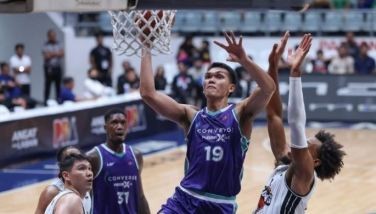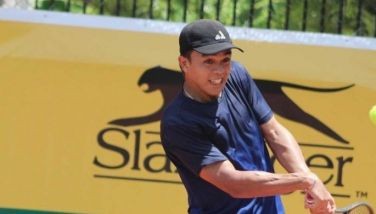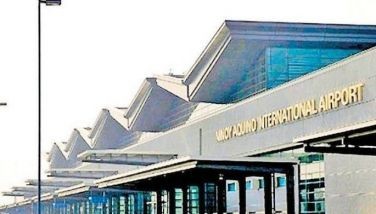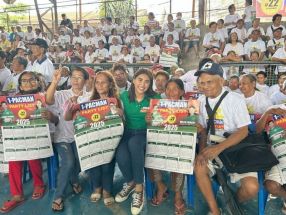Leadership and parades
June 10, 2001 | 12:00am
 John Naisbitt, author of Megatrends: Ten New Directions Transforming Our Lives, noted that leadership "involves finding a parade and getting in front of it." In developed countries were civil society is fairly well-organized, where enough of the citizenry are sufficiently empowered to directly influence the course of public policy, leadership appears to be a simple enough matter. It means being attuned to popular sentiments relating to people’s salient concerns, scanning the various organized groups with a clear stake in these concerns and, finally, selecting a group or some alliance of groups where one – a leader – may effectively exercise mainly managerial functions.
John Naisbitt, author of Megatrends: Ten New Directions Transforming Our Lives, noted that leadership "involves finding a parade and getting in front of it." In developed countries were civil society is fairly well-organized, where enough of the citizenry are sufficiently empowered to directly influence the course of public policy, leadership appears to be a simple enough matter. It means being attuned to popular sentiments relating to people’s salient concerns, scanning the various organized groups with a clear stake in these concerns and, finally, selecting a group or some alliance of groups where one – a leader – may effectively exercise mainly managerial functions.
Leadership and management are synonymous concepts in such a situation, one where the articulation of interests and the requisite organizational work among people with identical or similar interests have already been completed.
Leadership is far more demanding in societies euphemistically categorized as underdeveloped or developing. Here traditionally disempowered people often need to be educated as regards their proper interests and the strategies and tactics for successfully pursuing them. Then they have to be impressed with the need to organize so that such interests might gain public and political recognition. Finally, people have to be psychologically bonded and physically involved in organized – necessarily often repeated – group actions towards realizing their proper interests.
President Arroyo, like all of her Malacañang predecessors, is clearly faced with a leadership challenge. The problem, however, is she might mistake the nature of the challenge. If she considered it in the simplistic language of finding a parade and getting in front of it, she probably would not serve the interests of most Filipinos. The already conveniently available parades are those where the influential and the powerful in Philippine society have articulated, organized and repeatedly pursued vested sectoral or oligarchic interests.
Practically all the historic parades of interests in this country are in fundamental opposition to a badly-needed restructuring of the nation’s economy towards entrepreneurial risk-taking and full market competitiveness. Instead, they have been mostly rent-seeking and politically coddled quasi-economic enterprises. This is the basic reason why the industrial and agrarian reforms which would make the Philippines economically efficient and globally competitive have repeatedly aborted.
The political parades are not much better than their economic counterparts. Until very recently, the national scenario has been dominated by oligarchic groups, dynastic families and similar political interests with exclusive rather than inclusive or democratizing perspectives. Even a casual review of the nation’s political history reveals institutionalized biases for privileged elites, repressive measures against reformist and radical groups and – in quasi-democratic exercise like elections, referenda and recall – corruption or repudiation of the popular will.
Midway in 2001, with both political and economic challenges confronting the nation and her administration, President Arroyo must help the country break free from historical trends which have consistently aborted its overall economic development and kept it from becoming a truly democratized society.
To do this, it is imperative that the President makes policy decisions that do not reflect much obsession with the elections of 2004 and the critical influence that traditional political king or queen-makers historically have exerted. Instead, she will have to build a brigade of non-traditional political actors, fortify it with the support of at least one sector of Philippine society with a great potential for seriously considering national and institutional modernization and, finally, recognize her true constituency as no less than the vast majority of the Filipino people.
President Arroyo will then be prepared to deliberately put together a new parade, get herself in front of it, and – with a supporting cast of millions beggaring anything EDSA and Luneta and Mendiola combined had ever put together – lead in reinventing Philippine history itself.
Or, unfortunately settling for the same traditional parades, she could park herself before one or any combination of them and – like any pragmatic, traditional politician – work to get herself re-elected as President in 2004. By that time, the combined effects of a badly-deteriorated economy, a highly-stressed polity and a generally fed-up citizenry – hostage for so long to so many insensitive administrations – would probably catch up with her and marginalize her chances of making it to her first elective presidency.
BrandSpace Articles
<
>
- Latest
- Trending
Trending
Latest
Trending
Latest
Recommended




























